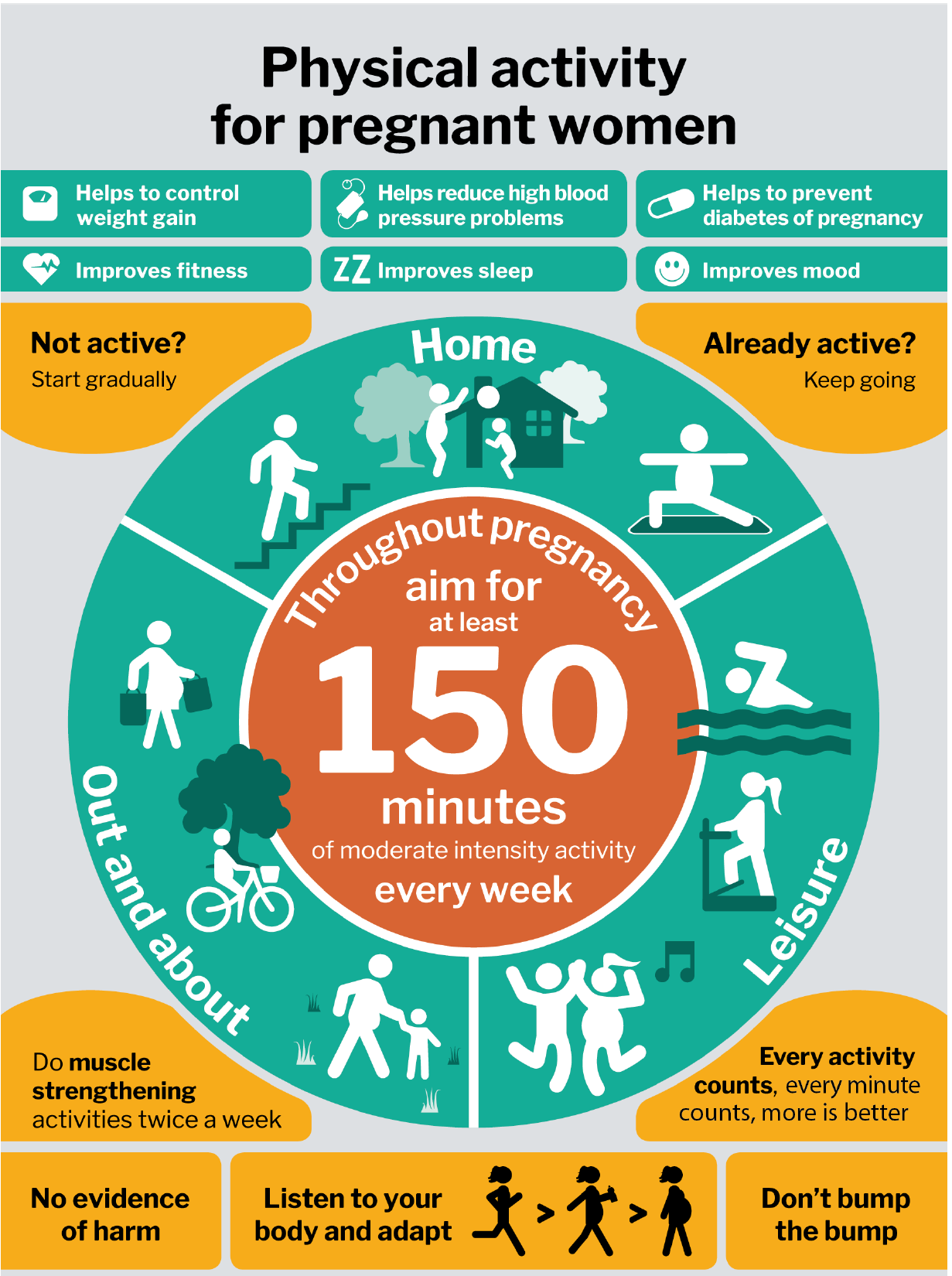exercise and pregnancy
Last edited 09/2019 and last reviewed 03/2022
Exercise in pregnancy (1)
- pregnant women should be informed that beginning or continuing a moderate
course of exercise during pregnancy is not associated with adverse outcomes
- pregnant women should be informed of the potential dangers of certain activities during pregnancy, for example, contact sports, high-impact sports and vigorous racquet sports that may involve the risk of abdominal trauma, falls or excessive joint stress, and scuba diving, which may result in fetal birth defects and fetal decompression disease
The Chief Medical Officers' current recommendations for physical activity state that:
- benefits of physical activity during pregnancy identified were reduction in hypertensive disorders; improved cardiorespiratory fitness; lower gestational weight gain; and reduction in risk of gestational diabetes
- benefits of physical activity in the postpartum period (up to one year) were identified as a reduction in depression; improved emotional wellbeing; improved physical conditioning; and reduction in postpartum weight gain and a faster return to pre-pregnancy weight
- physical activity can safely be recommended to women during and after pregnancy and had no negative impact on breastfeeding postpartum
Exercise advice during pregnancy:

Exercise advice in the postpartum period (2):

Notes:
- physical activity choices should reflect activity levels pre-pregnancy and should include strength training. Vigorous activity is not recommended for previously inactive women. After the 6 to 8 week postnatal check, and depending on how the woman feels, more intense activities can gradually resume, i.e. building up intensity from moderate to vigorous over a minimum period of at least 3 months
- * Moderate-intensity physical activity leads to faster breathing, increased heart rate and feeling warmer. Moderate-intensity physical activity could include walking at 3-4 mph, and household tasks such as vacuum cleaning or mowing the lawn (3)
- **Vigorous-intensity physical activity leads to very hard breathing, shortness of breath, rapid heartbeat and should leave a person unable to maintain a conversation comfortably. Vigorous-intensity activity could include running at 6-8 mph, cycling at 12-14 mph or swimming slow crawl (50 yards per minute) (3)
- moderate and vigorous activity can be differentiated by the 'talk test': being able to talk but not sing indicates moderate intensity activity, while having difficulty talking without pausing is a sign of vigorous activity (2)
Reference:
- NICE (March 2016). Antenatal care for uncomplicated pregnancies
- UK Chief Medical Officers' Physical Activity Guidelines (September 2019)
- NICE (May 2013).Physical activity: brief advice for adults in primary care